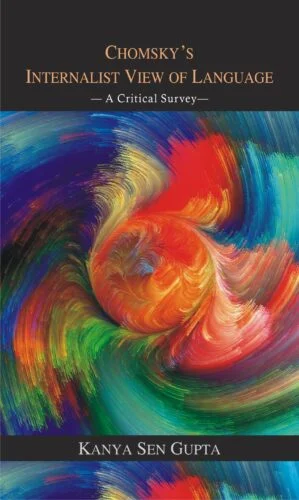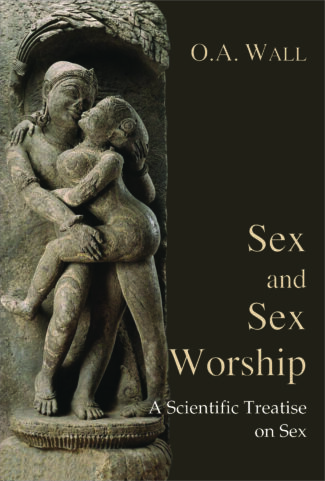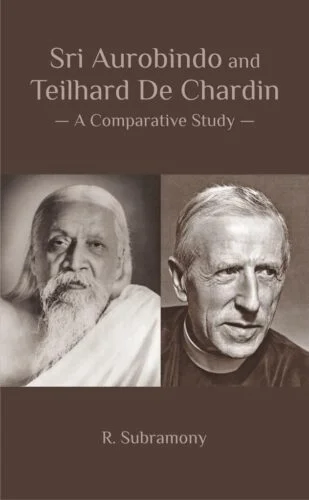Showing all 7 results

This book analyses Chomsky’s philosophy of language in the context of its difference from Wittgenstein’s account of language, and also other views of language which are in line with Wittgenstein explanation. And it aligns with the philosophy of Wittgenstein and his colleagues.
This volume endeavours to get at Chomsky’s philosophy of language in the context of its difference from Wittgenstein’s account of language, and also other views of language which are in line with Wittgenstein explanation. Since Chomsky’s preference is grammatical or structural approach to language, which is innate, he interprets knowledge of language as knowledge of rule-governing sentence formation. Obviously, Chomsky approves of Private Language with no concern for the theory of communication which is rooted in the use of language. In other words, Chomsky is not interested in successful communication which takes place only in social practices. But, according to what we have discussed in this book, successful communication or speech act is possible by what people normally do according to social convention.
In short, since Chomsky depends upon the structure or innateness of internalist approach to language, he cannot be accounted for social interpretation of language, which is needed for successful communication. As in this book, we are committed to public or socially approved language of Wittgenstein and his colleagues which is essential for communication, we walk away from Chomsky’s structural or mentalistic or innatist interpretation of language.
Sapiens and Sthitaprajna studies the concept of a wise person in the Stoic Seneca and in the Bhagavadgita. Although the Gita and Seneca’s writings were composed at least two centuries apart and a continent apart, they have much in common in recommending a well-lived life. This book describes how in both a wise person is endowed with both virtue and wisdom, is moral, makes right judgements and takes responsibility for actions. A wise and virtuous person always enjoys happiness, as happiness consists in knowing that one has done the right thing at the right time.
Both Seneca and the Gita demand intellectual rigour and wisdom for leading a virtuous and effective life. They provide guidelines for how to become and be wise. Both systems demand a sage to be emotionally sound and devoid of passions. This leads to mental peace and balance, and ultimately tranquillity and happiness. While surveying these similarities, this study also finds differences in their ways of application of these ideas. The metaphysics of the Gita obliges the sage to practise meditation, while the Stoics require a sage to be a rational person committed to analysing and intellectualizing any situation.
This comparative study will be of interest to students of both Ancient Western and Ancient Indian Philosophy. Practitioners of Stoicism and followers of the Gita should find the presence of closely-related ideas in a very different tradition of interest while perhaps finding somewhat different prescriptions a spur to action.

Mankind, when it gave expression to its first dawning of religious thoughts, wove a fabric of myths and theories about religion, the warp of which ran through from earliest historical times to our own days as threads of the warp of philosophies and theories about sex, male, female, love, passion, lust, desire, procreation, offspring, etc. The succeeding ages and civilizations wove into its warp the woof of the individual religions, myths and fables of gods and goddesses, so that the whole fabric of beliefs became refined as mankind itself advanced.
Sex and Sex Worship is the result of a long-time, arduous study of the concept of sex and the worship of phallus in various civilizations and in the development of different religions, modern and old, over a period of many millennia. The book makes one grasp a lot of topics associated with sex and sex symbols such as nature of sex and reproduction, status of women, cosmo-gonies, sex in man and animal, sexual relationship of gods and goddesses, virgin worship, phallic festivals, among many, while making it clear that the worship of generative organs was rather a use of representations of phallus and yoni as symbols for certain religious ideas which were embodied in nature worship.
It also vividly talks about the concept of sex and sex organs in art and ethics, sculpture, art anatomy, etc. The contents in toto lead one to the myriad aspects and concerns associated with sex and phallic worship. It is a must read for a scholar and a common man alike.
Mankind, when it gave expression to its first dawning of religious thoughts, wove a fabric of myths and theories about religion, the warp of which ran through from earliest historical times to our own days as threads of the warp of philosophies and theories about sex, male, female, love, passion, lust, desire, procreation, offspring, etc. The succeeding ages and civilizations wove into its warp the woof of the individual religions, myths and fables of gods and goddesses, so that the whole fabric of beliefs became refined as mankind itself advanced.
Sex and Sex Worship is the result of a long-time, arduous study of the concept of sex and the worship of phallus in various civilizations and in the development of different religions, modern and old, over a period of many millennia. The book makes one grasp a lot of topics associated with sex and sex symbols such as nature of sex and reproduction, status of women, cosmo-gonies, sex in man and animal, sexual relationship of gods and goddesses, virgin worship, phallic festivals, among many, while making it clear that the worship of generative organs was rather a use of representations of phallus and yoni as symbols for certain religious ideas which were embodied in nature worship.
It also vividly talks about the concept of sex and sex organs in art and ethics, sculpture, art anatomy, etc. The contents in toto lead one to the myriad aspects and concerns associated with sex and phallic worship. It is a must read for a scholar and a common man alike.

Mankind, when it gave expression to its first dawning of religious thoughts, wove a fabric of myths and theories about religion, the warp of which ran through from earliest historical times to our own days as threads of the warp of philosophies and theories about sex, male, female, love, passion, lust, desire, procreation, offspring, etc. The succeeding ages and civilizations wove into its warp the woof of the individual religions, myths and fables of gods and goddesses, so that the whole fabric of beliefs became refined as mankind itself advanced.
Sex and Sex Worship is the result of a long-time, arduous study of the concept of sex and the worship of phallus in various civilizations and in the development of different religions, modern and old, over a period of many millennia. The book makes one grasp a lot of topics associated with sex and sex symbols such as nature of sex and reproduction, status of women, cosmo-gonies, sex in man and animal, sexual relationship of gods and goddesses, virgin worship, phallic festivals, among many, while making it clear that the worship of generative organs was rather a use of representations of phallus and yoni as symbols for certain religious ideas which were embodied in nature worship.
It also vividly talks about the concept of sex and sex organs in art and ethics, sculpture, art anatomy, etc. The contents in toto lead one to the myriad aspects and concerns associated with sex and phallic worship. It is a must read for a scholar and a common man alike.
Mankind, when it gave expression to its first dawning of religious thoughts, wove a fabric of myths and theories about religion, the warp of which ran through from earliest historical times to our own days as threads of the warp of philosophies and theories about sex, male, female, love, passion, lust, desire, procreation, offspring, etc. The succeeding ages and civilizations wove into its warp the woof of the individual religions, myths and fables of gods and goddesses, so that the whole fabric of beliefs became refined as mankind itself advanced.
Sex and Sex Worship is the result of a long-time, arduous study of the concept of sex and the worship of phallus in various civilizations and in the development of different religions, modern and old, over a period of many millennia. The book makes one grasp a lot of topics associated with sex and sex symbols such as nature of sex and reproduction, status of women, cosmo-gonies, sex in man and animal, sexual relationship of gods and goddesses, virgin worship, phallic festivals, among many, while making it clear that the worship of generative organs was rather a use of representations of phallus and yoni as symbols for certain religious ideas which were embodied in nature worship.
It also vividly talks about the concept of sex and sex organs in art and ethics, sculpture, art anatomy, etc. The contents in toto lead one to the myriad aspects and concerns associated with sex and phallic worship. It is a must read for a scholar and a common man alike.

The book critically analyses many philosophical concerns of both Sri Aurobindo and Teilhard de Chardin and talks about the future evolution. It involves recognizing parallel features as well as differences in both the philosophers.
Sri Aurobindo and Teilhard de Chardin: A Comparative Study ventures into identify the progressive rungs in the ladder of human consciousness pointed out by both the thinkers, to see how they visualize going beyond to achieve Sachchidanda, the Supreme Bliss. The scrutiny involves recognizing parallel features as well as differences in both the philosophers.
Their writings are extremely significant in a phase where the future of humanity is at risk. Sri Aurobindo, who is steeped in the Vedic wisdom of the ancient India, calls up on us to shed our selfish nature and reach the higher levels of consciousness. Teilhard de Chardin, a Jesuit priest, exhorts us to unite and shed divisions. There is a striking similarity in their cosmologies. Sri Aurobindos concept of Supermind is the last stage in evolution and Teilhards Omega Point is the summit of evolution. Their process of evolution contains a triple transformation of consciousness. The book critically thus analyses many philosophical concerns of both Sri Aurobindo and de Chardin and talks about the future evolution.

The book addresses the main theme of the nature of consciousness from a wide-ranging stances and have also taken a step towards establishing a platform for an intense and critical study of Indian theories of consciousness
The book provides a platform to discuss and examine the subtle and complex issues related to the nature of consciousness, self, mental states and subjectivity from Indian and cross-cultural perspectives. It explores contemporary problems of consciousness and tries to find solutions from Indian philosophical traditions. The purpose is to understand how far the views and approaches of classical and contemporary Indian thinkers are relevant in contemporary consciousness studies. The book argues that great thinkers of Vedānta, Tantra, Sāṁkhya and Buddhism have done enormous works which can be explored, examined and enhanced even today for a better comprehension of the subjectivity and conscious experience.
The chapters of this present volume have thoroughly explored and examined many classical Indian theories of consciousness. Keeping in view the objectives of this volume, the contributors have made an effective effort to reflect critically on Indian theories to answer the contemporary problems. There are chapters discussing and examining the standpoints of Indian thinkers like Abhinavagupta, Utpala, Śaṅkara, Rāmānuja, Swāmī Vidyāraṇya, Nāgārjuna, Gautama and many more. On the other hand, there are chapters engaged in reappraising the philosophical positions of Kant, Hegel, Sartre, Chalmers, Searle, Dennett and other contemporary thinkers. The chapters of this volume have addressed the main theme from a wide-ranging stances and have also taken a step towards establishing a platform for an intense and critical study of Indian theories of consciousness.
The book is extremely beneficial for students and scholars interested in classical Indian philosophy and contemporary consciousness studies. It inspires more researchers to ponder upon the concept of consciousness and subjectivity from multiple dimensions.
Morality for the Ailing and Others: An Anthology on Applied Ethics, volume 2 is a collection of ten articles written by distinguished scholars who have provided exciting and interesting introduction to some domains of medical ethics, environmental ethics, ethics of politics, exploratory account of moral domains centring female sexuality, women’s position in society and prescribed code of conduct for women and analytic explanation of some hard-core ethical concepts and theories. This publication aims at carrying out the task of emphasizing the link, if any, between hard-core ethical theories and their applications to real life practical situations with special reference to Indian texts and literature. However, any holistic approach to ethics as a branch of philosophy hardly can deny drawing some contrast, comparison and analogy with the Western paradigms. The present anthology is no exception to this custom. Strictly speaking, this is a book on Applied Ethics which aims at exploring concrete suggestions, as far as possible, to meet challenges posed before human beings arising from moral conflicts and dilemmas at different levels of life. Whoever is interested in applied ethics – whether a researcher or a student or a lay reader – will be enormously benefited by the richness of the content of this volume. Authors have sharpened theoretical tools as per their requirements and credibly covered some of the fuzzy areas of practical moral situations. Articles are written in clear language and in very lucid but argumentative style.
| There are no products |